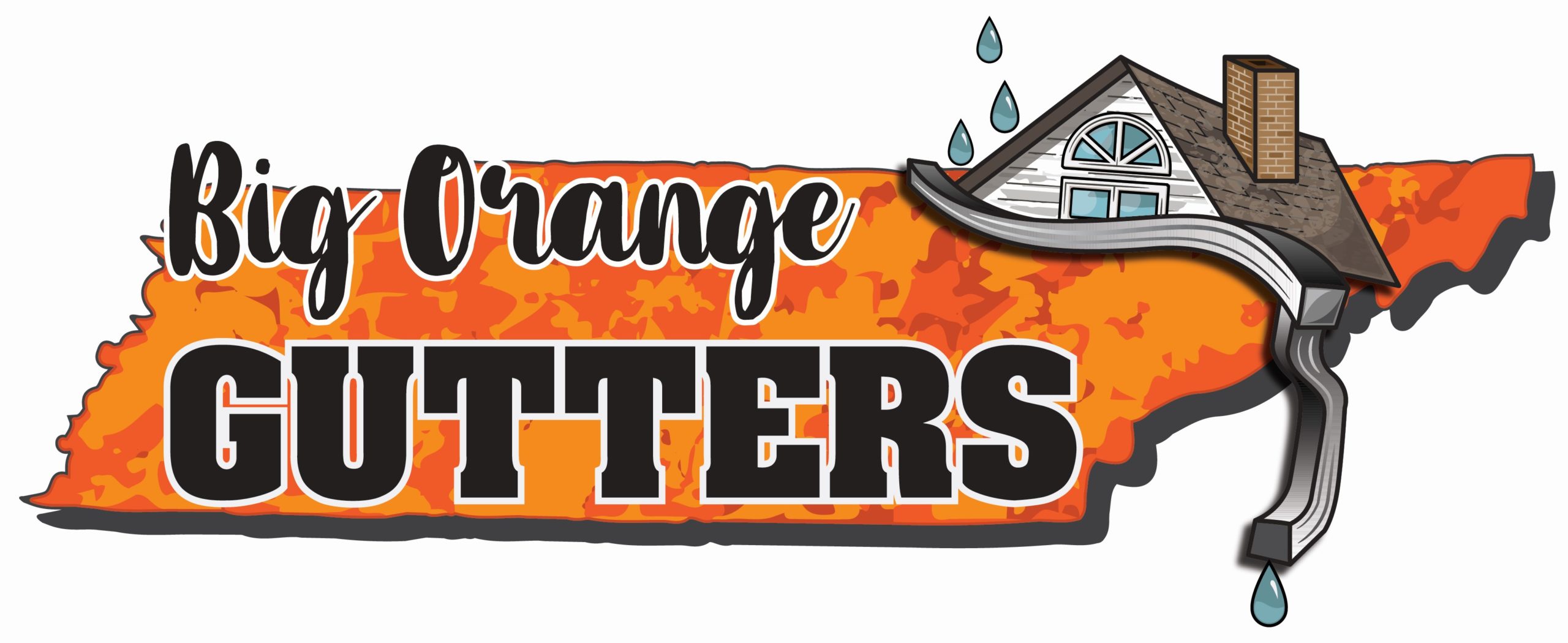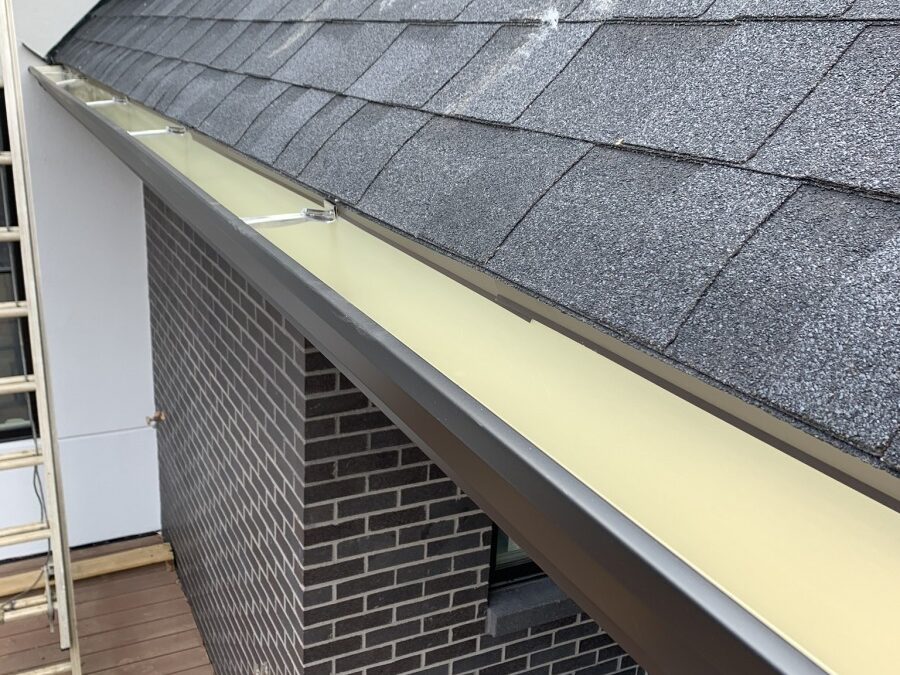When it comes to home protection, most homeowners focus on their roof, siding, and foundation. But there’s one unsung hero quietly doing its job to protect your home from water damage: the gutter drip edge. At Big Orange Gutters, serving Nashville and Knoxville, TN, we believe that this small but mighty component deserves a moment in the spotlight.
In this article, we’ll explore the role of the gutter drip edge, why it’s especially important in Tennessee’s unique climate, and how it contributes to the overall health of your home. If you’re unfamiliar with this essential piece of your gutter system, get ready to see how it works behind the scenes to protect your home from water damage.
What Is a Gutter Drip Edge?
The gutter drip edge is a thin strip of metal that sits along the edges of your roof, tucked under the shingles, and directs water into your gutters. While it might sound simple, this small piece of flashing performs a critical task—preventing water from seeping behind your gutters and into areas of your home that are highly vulnerable to water damage, like your fascia, soffit, and walls.
Without a drip edge, water can run underneath the roof’s edge due to surface tension, potentially causing rot, mold growth, and other structural damage. Over time, this can lead to expensive repairs that could have been avoided with the proper installation of a drip edge.
Why the Gutter Drip Edge Is Crucial for Nashville and Knoxville Homes
Nashville and Knoxville experience a unique mix of weather patterns. From the heavy rains that roll through during the spring and summer months to the occasional ice storms of winter, homes in these cities endure a range of conditions that can challenge any water management system. Here’s why the gutter drip edge is a crucial part of your home’s defense in Tennessee:
- Heavy Rainfall: Nashville and Knoxville both see an average of about 50 inches of rain per year. That’s a lot of water running off your roof! The drip edge helps ensure that this rainwater is channeled directly into your gutters, reducing the risk of water spilling over the edges and causing damage to your roofline and foundation.
- Wind-Driven Rain: During storms, rain can be blown sideways, potentially bypassing your gutters and sneaking underneath your shingles. A well-installed drip edge provides a shield against wind-driven rain, helping to keep water from infiltrating your roof structure and causing leaks.
- Ice Dams: While winters in Tennessee are typically mild, we still experience cold snaps that can lead to ice dams. When ice builds up along the roof’s edge, it can trap water behind it, allowing it to seep into your home. The drip edge helps direct melting ice and snow into your gutters, preventing the formation of ice dams and reducing the risk of water damage.
The Drip Edge as Your Roof’s Best Friend
One of the most overlooked aspects of roof maintenance is how the drip edge extends the life of your roof. Without this vital piece of flashing, the edges of your roof can deteriorate quickly as water seeps into the roof decking, causing rot and decay. In some cases, the absence of a drip edge can even void your roof’s warranty.
By directing water into the gutter system, the gutter drip edge plays a key role in keeping the roof’s edge dry and intact, helping your shingles last longer and preventing costly repairs to the roof structure. If you’re investing in a new roof or gutter system, make sure a drip edge is part of the installation to safeguard your roof for years to come.
Protecting Your Fascia and Soffit
The fascia and soffit are important components of your roofline. The fascia is the vertical board that supports your gutters, while the soffit is the horizontal surface beneath the roof’s overhang. Both of these areas are highly susceptible to water damage if not properly protected.
Without a drip edge, water can run down behind the gutters and onto the fascia, leading to wood rot and mold growth. This can not only damage the fascia itself but also weaken the gutter system’s support, making it less effective. Over time, the soffit can also become waterlogged, leading to additional damage and potential mold growth inside your attic.
The drip edge acts as a barrier, preventing water from sneaking behind the gutters and protecting these vulnerable areas from moisture-related damage. In Nashville and Knoxville, where we experience frequent rainfall, this protection is especially important for maintaining the long-term health of your home’s exterior.
How the Drip Edge Complements Your Gutter System
It’s easy to think of your gutters as standalone components, but they actually rely on other elements of your roof to function properly. One of the most important of these elements is the gutter drip edge. Without it, water can bypass the gutters altogether, leading to potential flooding around your home’s foundation.
In Tennessee, where both Nashville and Knoxville experience heavy rainfall and the potential for flooding, the importance of proper water management cannot be overstated. The drip edge ensures that water flows seamlessly from your roof into your gutters, preventing overflow and reducing the risk of foundation issues caused by poor drainage.
If you’re considering upgrading your gutter system or making improvements to your roof, it’s worth paying attention to the condition and installation of the drip edge. This small but critical component works hand-in-hand with your gutters to keep water away from the most vulnerable areas of your home.
The Environmental Benefits of a Drip Edge
While the primary purpose of the drip edge is to protect your home from water damage, it also has some environmental benefits that may surprise you. For homeowners looking to minimize their environmental impact, here’s how the gutter drip edge can help:
- Waste Reduction: By preventing water damage to the roof, fascia, and soffit, the drip edge reduces the need for costly repairs and replacements. This means fewer materials are wasted over time, contributing to more sustainable home maintenance.
- Energy Efficiency: A well-protected roof and attic help regulate the temperature inside your home, reducing your heating and cooling costs. When water damage leads to mold growth or rot, it can compromise the insulation in your attic, making your home less energy-efficient. The drip edge helps maintain a well-sealed roof, contributing to better overall energy performance.
- Recyclable Materials: Most drip edges are made from aluminum, galvanized steel, or copper, all of which are recyclable materials. If your drip edge needs to be replaced, it can often be recycled, reducing waste and supporting sustainability.
Enhancing Your Home’s Curb Appeal
Beyond its functional benefits, the gutter drip edge can also enhance the overall appearance of your home. Available in a range of materials and colors, drip edges can be chosen to complement your home’s exterior and gutter system. Whether you prefer a subtle, neutral look or a bold, contrasting color, the drip edge can be both functional and stylish.
Additionally, the drip edge helps prevent unsightly water streaks on your siding, which can accumulate over time and detract from your home’s curb appeal. By keeping water flowing directly into the gutters, the drip edge helps maintain a clean, polished look for your home’s exterior.
Conclusion
While the gutter drip edge may not be the first thing you think of when considering your home’s water management system, its role is vital to protecting your roof, gutters, and foundation from water damage. At Big Orange Gutters, we know that small details can make a big difference, and the drip edge is a prime example of this.
Whether you live in Nashville or Knoxville, TN, your home’s unique weather challenges make the drip edge an essential part of your defense against water intrusion. By preventing water from seeping behind the gutters and protecting your fascia, soffit, and roof deck, the drip edge helps maintain the long-term health and value of your home. It’s a simple yet powerful way to ensure your home stays dry, no matter what Mother Nature throws your way.
So, next time you look up at your roof, give a little nod to the unsung hero quietly doing its job—the gutter drip edge.

